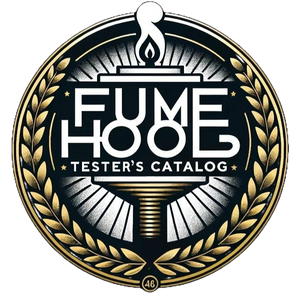
What you can't see can harm you.
Chemical labs may be grappling with an unrecognized but significant issue: a silent epidemic of compromised air quality and containment lapses. Although direct studies on low-level chemical exposure in labs are sparse, ample evidence shows the health impacts of poor air quality in similar environments. If outdoor and indoor pollution causes the damage, we know it does, imagine the risks in labs where hazardous chemicals are actively handled.
Laboratory ventilation is incredibly complex, and containment failure—a major driver of lab air pollution—is often hidden from view. Unlike fires or chemical spills, which yield immediate, visible damage, low-level chemical exposure is stealthy. Health effects may take years, even decades, to manifest, making cause and effect difficult to trace. This makes it critical to focus on containment as a primary performance measure for fume hoods and ventilation systems.

ANSI/ASSP Z9.5-2022 recognizes containment concerns by setting an AI test limit of 0.1 ppm for tracer gas escape from fume hoods. But can a threshold of 0.10 ppm versus 0.11 ppm realistically differentiate safety from hazard? The truth is, this metric can’t account for the specific toxicity of chemicals used or the cumulative effects of prolonged low-level exposure.
The standard even calls fume hoods “Exposure Control Devices” (ECDs)—reflecting their true purpose. Yet, the term "fume hood" is often mistaken for simple ventilation, akin to a commercial kitchen hood, overlooking the critical role it plays in protecting lab personnel. Investing in fume hoods only makes sense if they can reliably contain hazardous substances, but without long-term studies, we’re left to wonder whether current systems are sufficient.

However, we don’t need decades of studies to apply sound judgment. We know that better air quality means better health, and we understand that the more hazardous the contaminant, the greater the risk. So why not shift our focus to improving containment and exposure mitigation now? This means evaluating hoods for their containment effectiveness and employing risk-based assessments to better address containment loss.
So how can you verify that your fume hood is containing? The ASHRAE 110 standard provides a “static snapshot” of containment, but real-world conditions are far from static. Most lab work involves active use, and containment testing should reflect this. The answer lies in dynamic containment testing, which is where tools like the Tri-Color Airflow Visualizer come in, offering real-time visualization of containment performance. Learn more about the Tri-Color technology and its benefits HERE

True containment is determined by dynamic conditions in your lab. Realistic dynamic containment testing is challenging, we developed the Tri-Color system to provide a more accurate validation of containment in the conditions that exist in your lab..
Chip Albright
Founder and President
Fume Hood Certified, LLC.
PO Box 71477
Phoenix, AZ 85050.
Email: Chip@fumehoodcertified.com


